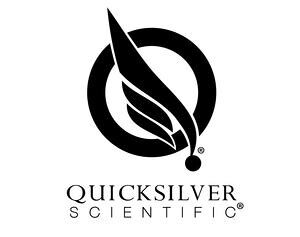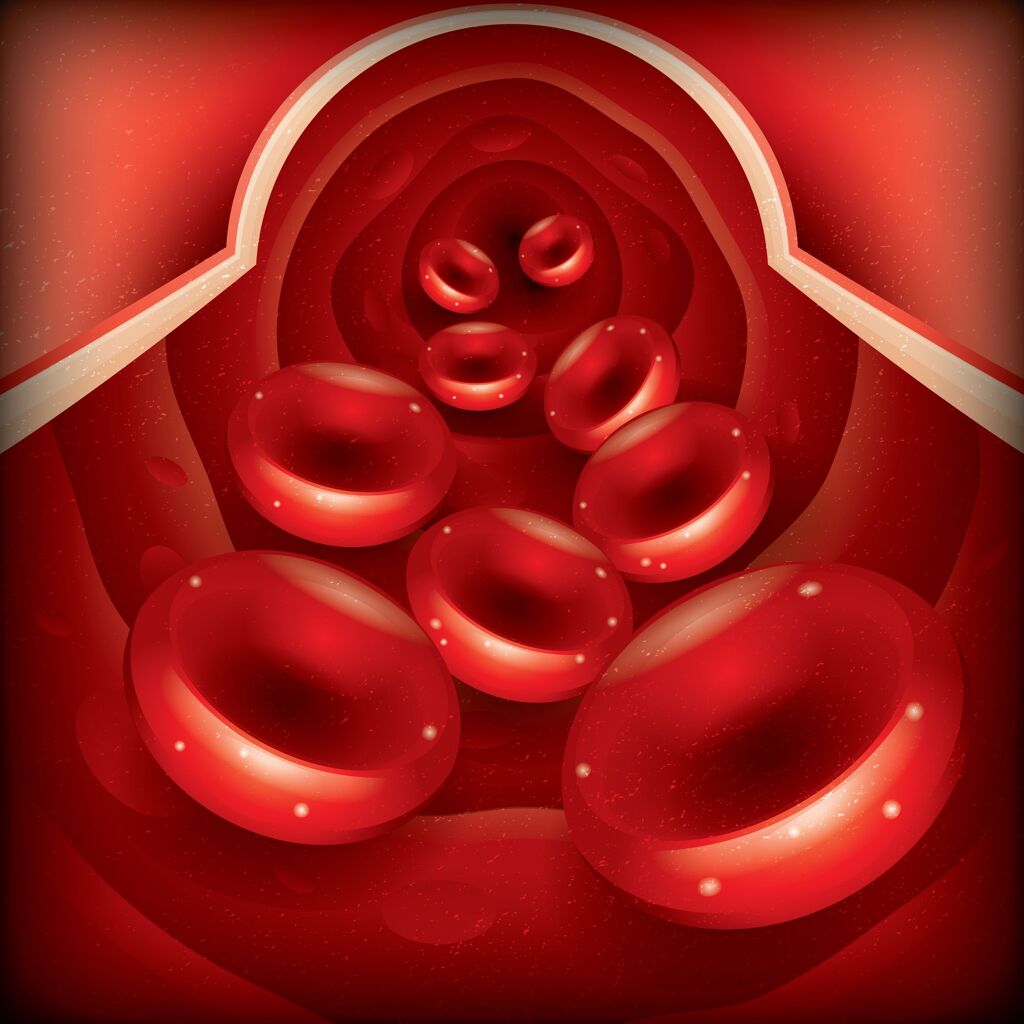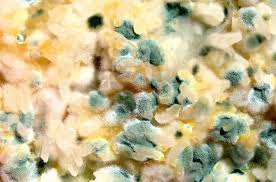ADHD & the Gut: Causes of ADHD

ADHD & The Gut
by Nicola Schuler, CNTP, MNT and Dr. Miles Nichols
In this next article on the gut-brain axis, we address ADHD Part 2. Last week, we looked at ADHD and its link to the gut. You can review that article HERE. This week, we explore a list of factors contributing to ADHD and specifically what you can do in the case of ADHD.
In Functional Medicine, we like to dig deep and look for the root cause(s). As there is no single cause of ADHD, in FM the approach we take is to look at all the factors found in research to be influencing ADHD.
We cannot change genetics but we can affect how genes express. We cannot change any prenatal events as mentioned last week such as maternal stress, poor diet, smoking or alcohol use during pregnancy and/or a low birth weight.
We can, however, change and improve a number of health factors, which will improve the condition of ADHD.
ADHD and The Gut- Nutrient Status & Diet
ADHD is associated with unhealthy diets and nutrients deficiencies (Chou WJ, 2018). Children with ADHD had significantly lower serum (blood) levels of vitamin B12, folate, vitamin B6, ferritin and monounsaturated fatty acids (Wang LJ, 2019).
They also had higher levels of serum saturated fatty acids and a higher omega 6 to omega 3 fatty acid ratio, which is inflammatory (Wang LJ, 2019).
Children with ADHD had a higher intake of nutrient-poor foods such as high sugar and high fat foods, and less vegetables, fruit and protein-rich foods (Wang LJ, 2019). Children with ADHD ate a higher intake of refined grains and a lower portion of dairy, calcium and vitamin B2 (Chou WJ, 2018).
It is clear from research that there is an association between unhealthy dietary patterns and ADHD. An unhealthy diet leads to the poor nutritional status of people with ADHD. In addition, food dyes and additives in the diet (Banerjee TD, 2007), common allergens such as eggs and micronutrient and mineral deficiencies (Wang LJ, 2019) have been implicated in ADHD. Improving diet and nutrition is expected to improve ADHD symptoms (Wang LJ, 2019).
Children with ADHD have been shown to have lower vitamin D levels when compared to children with healthy controls. Children with ADHD had an average blood level of 19.11 ng/ml whereas the control group average was 28.78 ng/ml (Sharif MR, 2015).
Of course, it is understandable that it can be difficult in some cases to help a child to eat a healthier diet with the peer and societal influences that push a standard American diet. However, with some diligent work and patience, a healthy diet can be achieved. Supplementation of some of the common nutrient deficiencies with a high quality professional grade B complex and cod liver oil may help.
ADHD and Gut Microbiome Health:
As we have discussed, the health of the microbiome is critical with ADHD. Dysbiosis and gut inflammation are factors that can lead to ADHD.
It is important to find a FM practitioner who will test for a variety of GI issues, such as dysbiosis, SIBO, overgrowths, infections, parasites, fungus, low SCFA’s or SCFA’s imbalance or any other type of infection or issues affecting gut health. After getting a clear picture of gut health, treating any issues found is critical.
Antibiotic use:
Antibiotics disrupt the gut microbiome. They kill all bacteria in the gut, including the good ones. Antibiotics are commonly prescribed for infants and children. This negatively affects the gut microbiota and health and development outcomes.
One study found that children who had received antibiotics in the first 6 months of life had significantly lower overall cognitive and verbal comprehension abilities, increased risk of problems with cognition, impulsivity, hyperactivity, ADHD, anxiety and emotional problems (Slykerman RF, 2019). The study concluded that early exposure to antibiotics may be associated with detrimental neurodevelopmental outcomes (Slykerman RF, 2019). Limit antibiotics use wherever possible.
Acetaminophen:
Tylenol contains an active ingredient called acetaminophen. Because it is available over the counter, many parents use Tylenol to treat pain and fever. It is typically used for mild to moderate pain relief and often used to relieve fever in children. However, research has identified that short-term maternal use of acetaminophen during pregnancy was negatively associated with ADHD in offspring and that long-term use during pregnancy was substantially associated with ADHD (Ystrom E, 2017).
Toxin exposure:
It is widely accepted that exposure to various toxins, such as the afore-mentioned food dyes, additives and artificial colors, lead contamination and exposure to other heavy metals, cigarette and alcohol exposure, and other potential toxins or chemicals, are environmental factors that contribute to ADHD (Banerjee TD, 2007).
It is important to minimize these exposures wherever possible, by eating a clean, organic diet, and avoiding toxins or chemicals as much as possible. This would include cleaning up the family’s personal care and household cleaning products, avoiding pollution wherever possible, not smoking cigarettes and keeping alcohol consumption to a minimum.
Other Sources of Toxins:
Another source of toxins that often goes undiscovered and can cause serious issues are mycotoxins, or toxins from mold. It is estimated that 1 in 2 American homes is water damaged (Spengler, 1994) and mold is not always visible. Our clinic specializes in helping people identify if they have been exposed to mold in the past or present and how to clear the toxins from the body.
Heavy metals:
Exposures to heavy metals, particularly mercury, arsenic, lead, antimony and cadmium, can be contributors to ADHD. One study found that lead, cadmium and antimony were associated with susceptibility to ADHD and symptom severity in school-age children (Lee MJ, 2018).
Eliminating exposure to heavy metals will help prevent neurodevelopmental disorders in children. In children with ADHD, it is best to test for heavy metals.
If there is an issue with metals exposure, then seek treatment by supporting the detoxification process of the body and/ or chelating heavy metals from the body if necessary. Seek out a skilled functional medicine practitioner for both of these approaches.
MTHFR gene mutation:
MTHFR is the name of both a gene and an enzyme in the human body called methylenetetrahydrofolate reductase. The gene tells the body how to make the enzyme. This enzyme is important to process folate properly. It turns folate into its bioavailable form, methylfolate, through the process methylation. The methylfolate then converts amino acids for many body functions, including the production of serotonin and dopamine.
If the MTHFR gene is mutated, it cannot produce the enzyme correctly, which disrupts various processes further downstream. One of these processes is the production of serotonin and dopamine, which are key players in ADHD, autism, and mood disorders (ADDitude, 2019). The malformation of the MTHFR gene causes the body to change folate into methylfolate at a reduced capacity (as low as 10% for homozygous and 50% for heterozygous) (ADDitude, 2019).
A person with the MTHFR mutation can have too much folate, and not enough methylfolate, which impairs various processes downstream. MTHFR is also critical in the process of detoxification. If it’s not working properly, heavy metal and mineral levels can become excessive or imbalanced, which can cause hyperactivity, mood disorders, and more (ADDitude, 2019). It is best to seek help from a functional medicine doctor if this is an issue or is suspected.
HPA axis:
Stress can contribute to ADHD. It is not often named as a cause of ADHD but a stressful situation can trigger a person with ADHD. For this reason, it is advisable to reduce stress where possible and manage stress. Stress can be managed with meditation and other mindfulness practices. One study based on adults found that self-reported ADHD symptoms, emotional dysregulation and clinician ratings of ADHD symptoms improved for those who practiced mindfulness meditation relative to those who did not (Mitchell JT, 2017).
Yoga is another modality to increase mindfulness and help to manage ADHD symptoms. A small study done with children in 2013 found that a regular yoga practice, alongside treatment for ADHD, led to ‘a significant improvement in the ADHD symptoms’ (Hariprasad VR, 2013). In the months following the study, the children practiced yoga irregularly and symptoms worsened again (Hariprasad VR, 2013).
Tai Chi has also been found to reduce symptoms. One small study involving Tai Chi twice per week resulted in the study participants experiencing less anxiety, better behavior, less daydreaming, more appropriate emotional responses and less hyperactivity after 5 weeks of Tai Chi (Hernandez-Reif M, 2000).
Similarly, it has been found that spending time outdoors and playing in green open spaces reduces overall symptom severity in children with ADHD (Taylor AF, 2011). Children with ADHD who play regularly in green play settings have milder symptoms than children who do not (Taylor AF, 2011).
Generally, meditation and gentle movement practices that are mindful can be helpful for regulating the stress response. Creating a good habit from a young age of daily meditation is an invaluable life skill. Even 3-5 minutes per day can make a difference. And children can and do learn to meditate. Even if it is only for a short time, it is still helpful.
Exercise: We know that exercise improves mood and behavior in children and adults and lowers chronic disease risks. One study looking specifically at behavioral health disorders in children found that aerobic exercise improved symptoms (Bowling A, 2017). The children taking aerobic exercise experienced 32% to 51% lower incidence of poor self-regulation and disciplinary time out of class when participating in the exercise. These effects were noticeably more pronounced on days that children participated in the aerobic exercise, but carryover effects on non-exercise days were also observed. Aerobic exercise shows promise for improving self-regulation and classroom functioning among children with complex behavioral health disorders (Bowling A, 2017).
Screen time on phones, computers, video games and TV: Research has definitively linked excessive and addictive use of digital media with physical, psychological, social and neurological adverse effects. Overall screen time and violent and fast-paced content can activate dopamine and the reward pathways, leading to ADHD-related behavior and sleep problems (Lissak, 2018). A case study involving 9-year-old boy with ADHD found that screen time induced ADHD-related behavior (Lissak, 2018). Research agrees that reducing screen time is an effective tool to decrease ADHD-related behavior (Lissak, 2018). A secondary effect of reducing screen time is increased sleep time, which improves overall health.
To Read About Blog Topic, Scroll Down
Want To Work With Our Clinic?
Do you have a chronic or mystery illness that no one has been able to help you with? Are you simply wanting to re-connect with a healthier version of yourself? It’s Time To Finally Feel Better!
Practical things that you can do to address ADHD:
Diet:
- Adopt a clean, organic whole foods diet. Limit sugar, refined carbohydrates and processed foods. Eat vegetables, fruits, high quality organic proteins and healthy fats such as omega-3 fatty acids found in certain types of oily fish, flaxseed and other foods. Fermented foods help gut health as they contain live probiotics. Prebiotic foods will aid gut health and specifically, the balance of SCFAs. For more specific information on a diet that supports gut-brain axis health, please refer to our article on anxiety and the gut-brain axis.
- Remove food dyes and additives. Certain food colorings, dyes, additives and preservatives may increase hyperactive behavior in some children (The Mayo Clinic, 2017). Avoid foods with these colorings and preservatives:
- sodium benzoate – found in carbonated beverages, salad dressings, and fruit juice products
- FD&C Yellow No. 6 – found in breadcrumbs, cereal, candy, icing, and soft drinks
- FD&C Yellow No. 10 – found in juices, sorbets, and smoked haddock
- FD&C Yellow No. 5 – found in pickles, cereal, granola bars, and yogurt
- FD&C Red No. 40 – found in soft drinks, children’s medications, gelatin desserts, and ice cream
- Remove commonly allergenic foods such as gluten/wheat, eggs, chocolate, dairy, tree nuts, peanuts and any other food you think you may be allergic to.
Supplements: can be helpful, as specific nutrient deficiencies have been identified with ADHD.
- B12, Folate, B6: B vitamins have been found to be lower in people with ADHD (Wang LJ, 2019). Certain genetic mutations, such as MTHFR which we mentioned previously, can impair the body’s use of B vitamins. In this case, it would be helpful to work with a FM practitioner to determine your MTHFR status and address it accordingly with supplements and other measures.
- Ferritin / iron: Children with ADHD are typically low in ferritin, which is the storage form of iron (Wang LJ, 2019). Test iron and ferritin levels first to determine if supplementation is necessary. (NOTE: Too much iron is a problem so please do not supplement iron without the guidance of a functional medicine or other qualified healthcare professional.)
- Omega 3: It has been found that in ADHD, omega 3 fat levels are low (Wang LJ, 2019). This is an important nutrient for the brain, which can help to reduce neuroinflammation. Either eat fatty fish such as wild salmon, sardines, herring and anchovies or supplement with fish oil to get adequate levels of the omega 3 fats, EPA and DHA.
- Vitamin D: Optimize vitamin D levels from sun exposure (avoid burning though) and/or supplemental vitamin D. First measure levels and determine if they are below 35 ng/ml. If so, supplementation and/or a healthy amount of sun exposure without sunscreen that does not produce sunburn will increase levels of vitamin D. When supplementing with Vitamin D, we recommend also supplementing with Vitamin K2. You can purchase products that have both in one capsule. Test vitamin D levels periodically to see if the dose is too high or too low. The sun may offer additional benefits beyond supplemental vitamin D so it is helpful to have a healthy level of sun exposure without burning.
- Probiotics: There is some research suggesting that probiotics may be helpful with ADHD (Pelsser LM, 2009). Getting to the root cause of gut issues is, of course, preferable and that can be done by working with a skilled functional medicine doctor.
- It is best to work with an experienced FM practitioner to determine what nutrient deficiencies you may have and how best to address them.
Mindfulness: Increase mindfulness with yoga, tai chi and meditation.
Exercise:
Be sure to get plenty of exercise, including time to play outside in nature.
Address gut health:
See a Functional Medicine practitioner to help you with gut health. Issues like dysbiosis and gut inflammation are important to address with ADHD. It is advisable to test for a variety of GI issues; dysbiosis, SIBO, overgrowths, infections, parasites, fungus, low SCFA’s or SCFA’s imbalance or any other type of infection or issues affecting gut health. After getting a clear picture of gut health, treating any issues found is critical.
If you or someone you know is suffering from ADHD, get in touch with our clinic today. Book a free 15-min discovery call to see how we can help you with your symptoms. We can answer your questions and help you book an initial consult with one of the functional medicine doctors in our clinic.
References:
- Aarts E, E. T. (2017). Gut microbiome in ADHD and its relation to neural reward anticipation. PLOS One.
- ADDitude. (2019, March 18). MTHFR: Another Piece of the ADHD-Genetics Puzzle. Retrieved August 14, 2019, from ADDitude: https://www.additudemag.com/mthfr-adhd-genetics-puzzle/
- All About ADHD. (n.d.). Causes of ADHD. Retrieved July 30, 2019, from All About ADHD: https://www.adhd-information.com/adhd-causes.html
- American Psychiatric Association. (2013). Diagnostic and Statistical Manual of Mental Disorders (DSM–5). American Psychiatric Association.
- Banerjee TD, M. F. (2007). Environmental risk factors for attention‐deficit hyperactivity disorder. Acta Paediatrica.
- Bowling A, S. J. (2017). Cybercycling Effects on Classroom Behavior in Children With Behavioral Health Disorders: An RCT. Pediatrics.
- Cenit MC, N. I.-F. (2017). Gut microbiota and attention deficit hyperactivity disorder: new perspectives for a challenging condition. European Child & Adolescent Psychiatry, 1081–1092.
- Centers for Disease Control and Prevention. (2018, September 21). Attention-Deficit / Hyperactivity Disorder (ADHD). Retrieved July 28, 2019, from www.cdc.gov: https://www.cdc.gov/ncbddd/adhd/data.html
- Children and Adults with Attention-Deficit/Hyperactivity Disorder. (2019). General Prevalence of ADHD. Children and Adults with Attention-Deficit/Hyperactivity Disorde.
- Chou WJ, L. M. (2018). Dietary and nutrient status of children with attention-deficit/ hyperactivity disorder: a case-control study. Asia Pacific Journal of Clinical Nutrition, 1325 – 1331.
- Chunlong Mu, Y. Y. (2016). Gut Microbiota: The Brain Peacekeeper. Frontiers in Microbiology.
- EPA, U. S. (2015, October). America’s Children and the Environment. Neurodevelopmental Disorders | Health.
- Hariprasad VR, A. R. (2013). Feasibility and efficacy of yoga as an add-on intervention in attention deficit-hyperactivity disorder: An exploratory study. Indian Journal of Psychiatry.
- Hernandez-Reif M, F. T. (2000). Attention Deficit Hyperactivity Disorder: Benefits from Tai Chi. Journal of Bodywork and Movement Therapies.
- Kim YK, S. C. (2018). The Microbiota-Gut-Brain Axis in Neuropsychiatric Disorders: Patho-physiological Mechanisms and Novel Treatments. Current Neuropharmacology.
- Lee MJ, C. M. (2018). Heavy Metals’ Effect on Susceptibility to Attention-Deficit/Hyperactivity Disorder: Implication of Lead, Cadmium, and Antimony. International Journal of Environmental Research and Public Health.
- Lissak. (2018). Adverse physiological and psychological effects of screen time on children and adolescents: Literature review and case study. Environmental Research.
- Ming X, C. N. (2018). A Gut Feeling: A Hypothesis of the Role of the Microbiome in Attention-Deficit/Hyperactivity Disorders. Sage Journals.
- Mitchell JT, M. E. (2017). A Pilot Trial of Mindfulness Meditation Training for ADHD in Adulthood: Impact on Core Symptoms, Executive Functioning, and Emotion Dysregulation. Journal of Attention Disorders.
- National Institute of Mental Health. (2019). www.nimh.nih.gov. Retrieved July 28, 2019, from NIH Nationa lInstitute of Mental Health: https://www.nimh.nih.gov/health/topics/attention-deficit-hyperactivity-disorder-adhd/index.shtml
- NHS. (2018, May 30). Treatment ADHD. Retrieved August 14, 2019, from NHS: https://www.nhs.uk/conditions/attention-deficit-hyperactivity-disorder-adhd/treatment/#
- Pelsser LM, B. J. (2009). ADHD as a (non) allergic hypersensitivity disorder: a hypothesis. Pediatric Allergy and Immunology.
- Reneman D, B. C. (2019). White Matter by Diffusion MRI Following Methylphenidate Treatment: A Randomized Control Trial in Males with Attention-Deficit/Hyperactivity Disorder. Radiology.
- Sharif MR, M. M. (2015). The Relationship between Serum Vitamin D Level and Attention Deficit Hyperactivity Disorder. Iranian Journal of Child Neurology.
- Slykerman RF, C. C. (2019). Exposure to antibiotics in the first 24 months of life and neurocognitive outcomes at 11 years of age. Psychopharmacology.
- Taylor AF, K. F. (2011). Could Exposure to Everyday Green Spaces Help Treat ADHD? Evidence from Children’s Play Settings. Applied Psychology.
- Thapar A, C. M. (2013). What have we learnt about the causes of ADHD? Journal of Child Psychology and Psychiatry.
- The Mayo Clinic. (2017, September 28). ADHD diet: Do food additives cause hyperactivity? Retrieved August 14, 2019, from The Mayo Clinic: https://www.mayoclinic.org/diseases-conditions/adhd/expert-answers/adhd/faq-20058203
- Wang LJ, Y. Y. (2019). Dietary Profiles, Nutritional Biochemistry Status, and Attention-Deficit/Hyperactivity Disorder: Path Analysis for a Case-Control Study. Journal of Clinical Medicine.
- Ystrom E, G. K. (2017). Prenatal Exposure to Acetaminophen and Risk of ADHD. Pediatrics.
Are You Suffering From A Chronic Illness?
Does your current health situation look like this…
- Do you feel that you have tried many things and either nothing works, or the treatment does not hold?
- Have you been told that there is nothing that can be done to reverse your illness and you just need to manage symptoms?
- Does your illness impact your work, your family, your happiness and your social life?
We specialize in finding answers and solutions for complicated chronic illness when people feel like they have tried everything. If this sounds like you, book a free call with us to see if we are the right fit for your health goals.
Dr. Miles has spoken for the following organizations:


















Responses